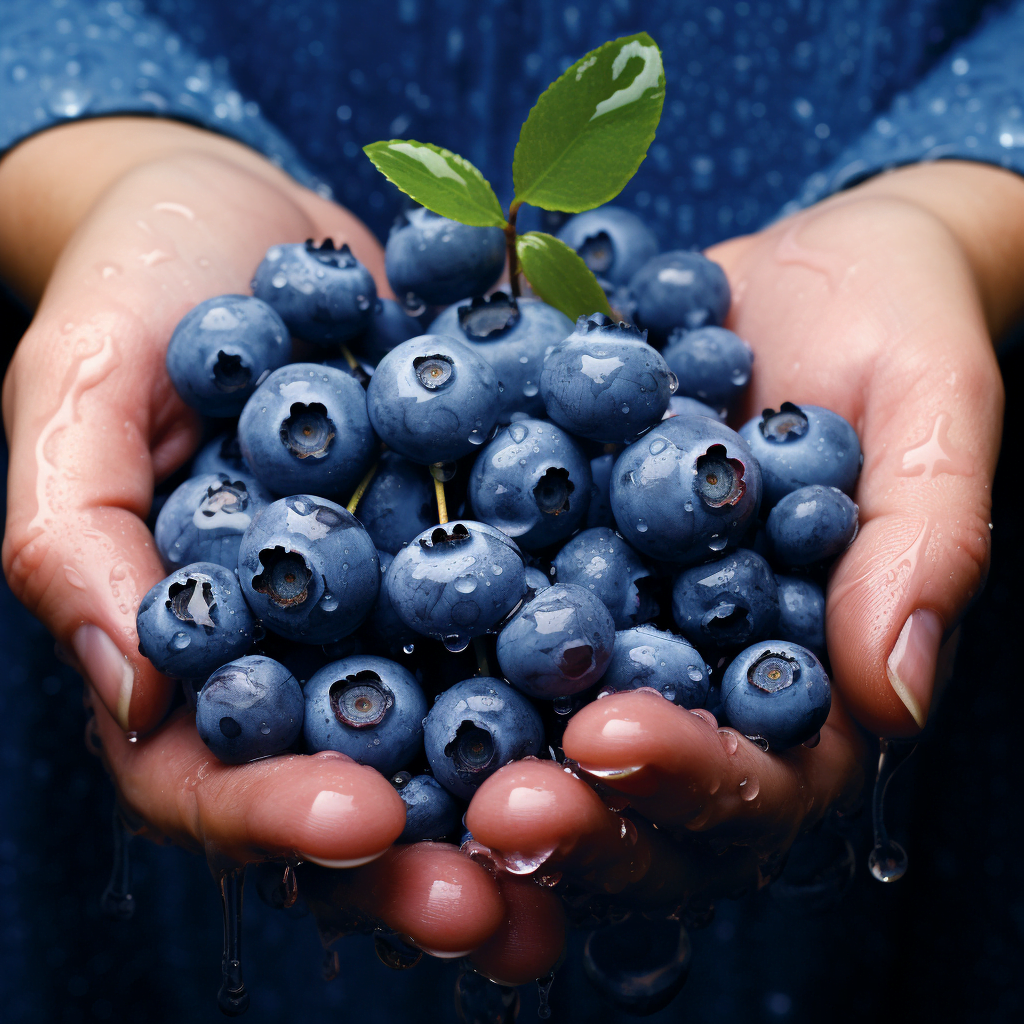Are you seeking a blueberry variety that is figuratively the ultimate choice, combining delectable imagery and sweet-tangy flavors? Look no further than Bluecrop. In this blog post, we’ll journey through the world of gardening to explore all there is to know about Bluecrop.
From its unique traits to its origins and history of cultivation, we will delve into the culinary delights, health benefits, and its role in sustainable agriculture. Whether you are an experienced gardener or just starting out, read on to find out why Bluecrop is the perfect choice.
The Unique Traits of Bluecrop Blueberries
Bluecrop blueberries are renowned for their bountiful harvests and delectable flavor, creating vivid imagery of abundant gardens. These highbush varieties are versatile and hardy, thriving in full sun and well-drained, acidic soil, painting a picture of adaptability.
With tolerance to colder temperatures, Bluecrop blueberries are the superheroes of home gardeners in various climates.

Bluecrop Blueberries
The Origins and History of Bluecrop Cultivation
The history of Bluecrop blueberries, as their cultivation in the United States began in the 20th century. Selective breeding of wild species led to the development of superior traits, revolutionizing commercial cultivation.
Today, Bluecrop blueberries are a staple in the industry, contributing significantly to global production, serving as a powerful allegory of progress.
Understanding Bluecrop Species
Bluecrop blueberries, part of the Vaccinium genus, are northern highbush varieties with larger berries. Selective breeding has enhanced traits like flavor and adaptability, leading to widespread cultivation, symbolizing the power of human innovation.
Belonging to the highbush blueberry family, they hold commercial significance in the blueberry industry.
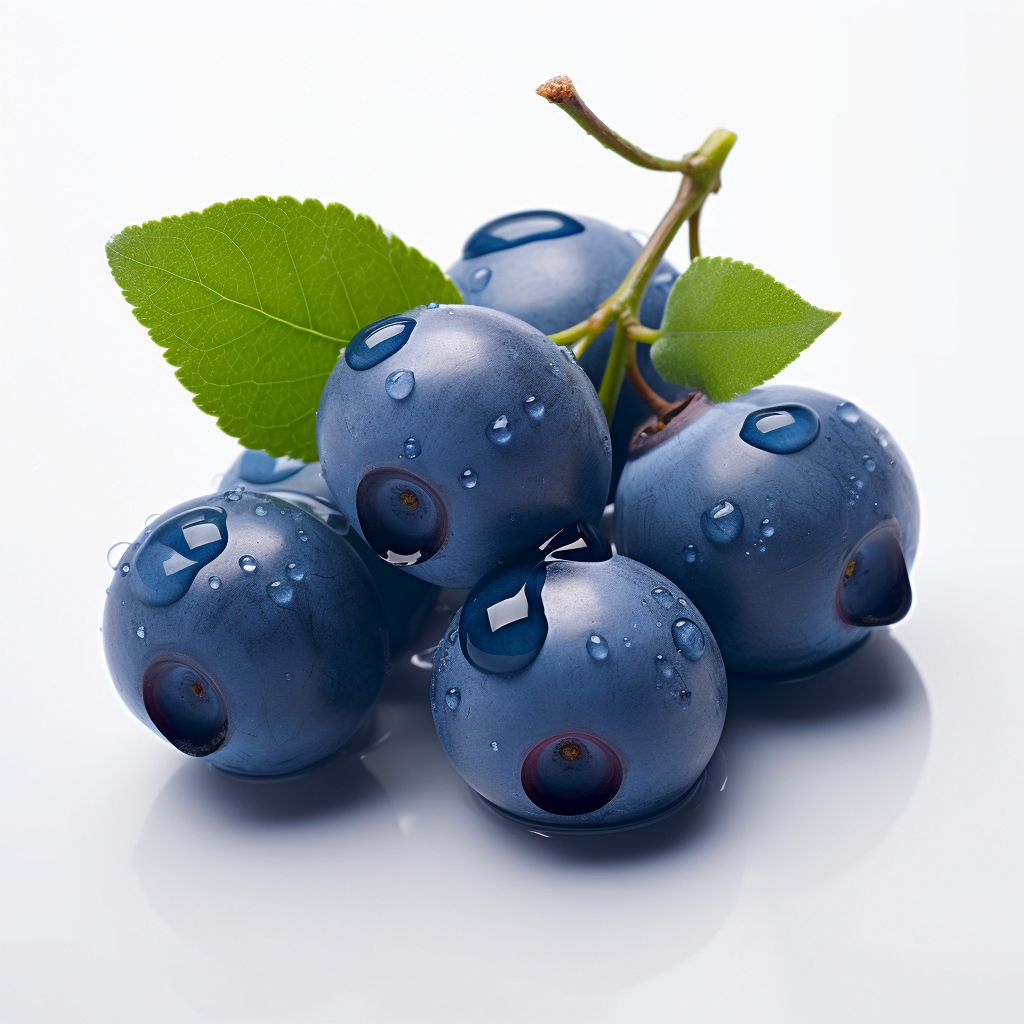
Culinary Delights with Bluecrop Blueberries
Indulge in a culinary adventure with Bluecrop blueberries, known for their sweet-tangy balance and nutritional benefits. These versatile berries enrich a variety of dishes, from muffins to desserts, with their vibrant color and refreshing taste.
Elevate both sweet and savory recipes with the distinct flavor profile of Bluecrop blueberries, creating a culinary parallelism.

Nutritional Benefits of Bluecrop Blueberries
Bluecrop blueberries, with their rich anthocyanin content, are known for their antioxidant properties, making them a shield against free radicals.
Low in calories and high in fiber, they offer cognitive and heart health benefits, nourishing both body and mind. Packed with essential nutrients like vitamin C, K, and manganese, Bluecrop blueberries, a type of shrub found naturally in bogs and in the province of New Brunswick, support overall well-being and are a valuable addition to a balanced diet.
These berries, also known as Vaccinium corymbosum ashei or northern highbush blueberry, are in season from June to February, making them a great option for winter nutrition.

Phytochemical Components of Bluecrop
Bluecrop, belonging to the Vaccinium species, is packed with anthocyanins, phenolic acids, vitamin C, and fiber, creating a metaphorical treasure trove of nutrients.
These components contribute to its antioxidant properties, anti-inflammatory effects, immune-boosting abilities, and digestive benefits, making them a sought-after addition to gardens and diets alike.
Cultivating Bluecrop Blueberries
Bluecrop blueberries thrive in acidic soil with good drainage and ample sunlight, painting a vivid picture of ideal growing conditions.
Regular watering and fertilization are essential, while late winter pruning promotes new growth and fruit production. Harvest ripe blueberries in mid to late summer for the best flavor, creating a repetitive rhythm of care.
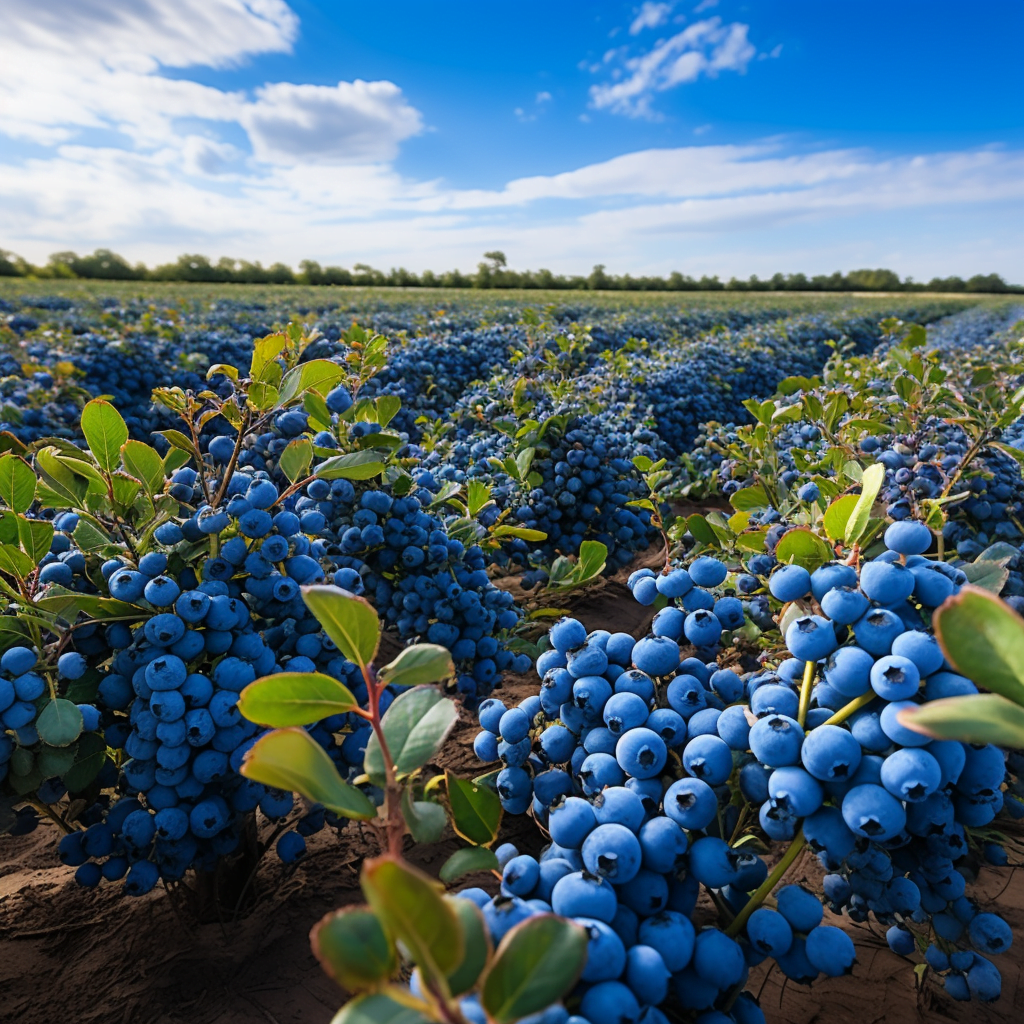
Ideal Growing Regions for Bluecrop
Bluecrop blueberries thrive in areas with cold winters and moderate summers, requiring well-draining soil with a pH level between 4.5 and 5.5.
They flourish in the Pacific Northwest, Northeast, and Midwest regions of the United States, symbolizing regional diversity.
With proper care, Bluecrop blueberries can yield up to 20 pounds per bush, highlighting their hyperbolic potential.
Common Pests and Diseases Affecting Bluecrop
Identify aphids, mites, and fruit flies damaging Bluecrop blueberries. Use neem oil or insecticidal soap for pest control, warding off unwanted visitors.
Watch out for powdery mildew, stem blight, and fruit rot, underscoring the importance of proactive measures.
Consider planting marigolds and clover for soil health and beneficial insects, creating a juxtaposition of natural solutions.
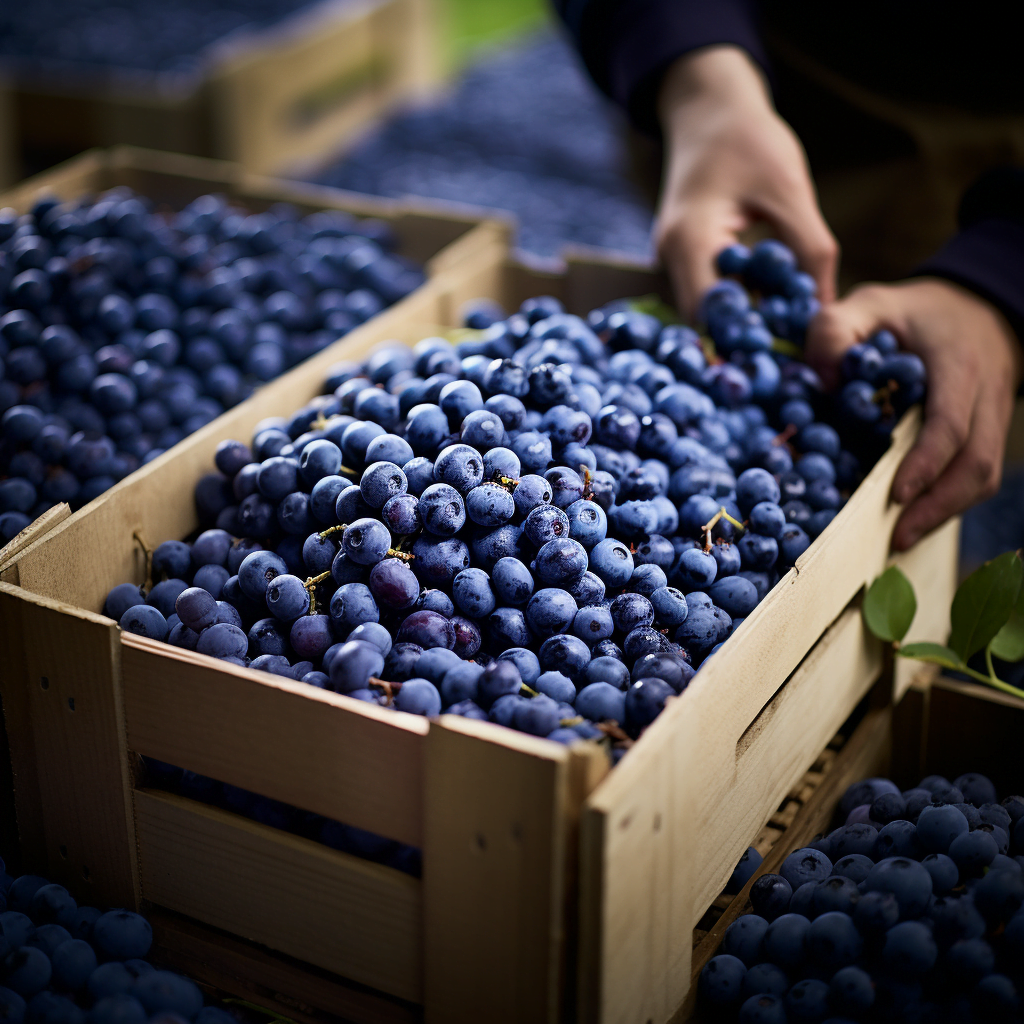
Production of Bluecrop Blueberries
Bluecrop blueberries, a high-yield and disease-resistant variety, ripen in mid-season with a sweet, tangy flavor, setting the stage for a fruitful harvest.
These bushes thrive in well-draining soil, requiring regular pruning and fertilization, demanding attention and care.
Planting multiple bushes for cross-pollination ensures a bountiful harvest, with proper care enabling fruit production for up to 20 years, painting a picture of long-term rewards.
Notable Bluecrop Producers Across the Globe
Blueberry enthusiasts worldwide embrace the high-yielding Bluecrop variety, underscoring its global impact.
Notable producers of this variety include Oregon, Washington, and British Columbia in North America, with significant production in the Netherlands and Poland in Europe, Ontario and Victoria in Canada, Waikato regions in Australia and New Zealand, Michigan and Florida in the United States, Germany, Mexico, Argentina, and many more.
Regulations Surrounding Bluecrop Production
Blueberry production, including Bluecrop, is regulated by organizations like the USDA in the US and the European Union to ensure safety and quality standards, as guardians of quality.
Regulations also cover pesticide usage, underscoring the importance of environmentally responsible practices.
Compliance with these regulations is crucial for producing high-quality blueberries, aligning with ethical allegories.
The Impact of Bluecrop on Blueberry Production
Bluecrop blueberries make a significant contribution to global production, meeting market demands and expanding cultivation, serving as a driving force.
Their impact extends from economic and agricultural influences to shaping industry trends and innovations, fostering growth and diversification, creating a legacy. Blueberry producers recognize the pivotal role of Bluecrop in meeting diverse industry needs.
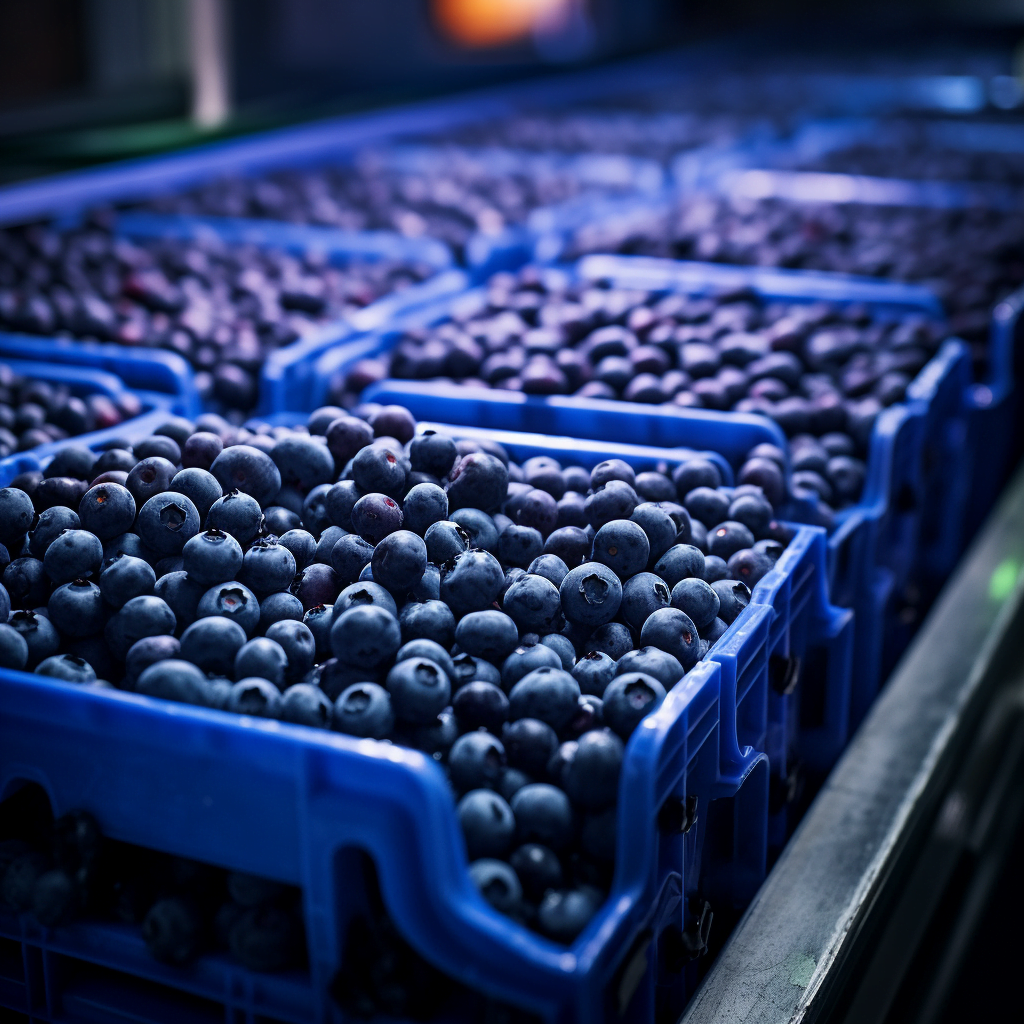
Bluecrop’s Influence on Fresh and Dried Blueberries Production
Bluecrop blueberries boast exceptional flavor and high yield, influencing fresh and dried blueberry production, underscoring their versatility.
Their adaptability and robust growth, along with the use of netting to protect the berries from birds, are pivotal to the industry’s success, meeting the rising demand for these berries.
Chosen for commercial production, Bluecrop blueberries ensure consistent quality and growth with the use of fertilizer, shaping the sustainable growth of fresh and dried blueberry production from December to July, especially when pollinated with Jersey or Earliblue,
Health Benefits of Bluecrop Blueberries
Bluecrop blueberries, a rich source of antioxidants, support heart health, cognitive function, and immune system, symbolizing holistic well-being.
With potential anti-inflammatory effects, regular consumption aids in weight management and digestive health, lowering the risk of chronic diseases, creating a path to vitality.
This makes Bluecrop blueberries an essential addition to a healthy diet.

Why Bluecrop is Considered a Super Fruit for Health
Celebrated for their exceptional nutrient profile, Bluecrop blueberries are renowned as a super fruit, symbolizing a nutritional powerhouse.
Their high concentration of vitamins and minerals promotes optimal health and vitality, making them a fountain of wellness.
With diverse health-boosting properties, they have garnered attention for their myriad of benefits, creating a thematic focus on well-being.
Future Prospects for Bluecrop Blueberries
The increasing demand and popularity position Bluecrop blueberries for sustained growth within the evolving global blueberry production landscape, underscoring their adaptability.
Ongoing research and innovation are expected to further enhance their cultivation and market potential, contributing to advancements in the blueberry industry, creating a path to progress.
The adaptability of Bluecrop blueberries creates opportunities for diversification and expansion, symbolizing future potential.
Conclusion
In conclusion, Bluecrop blueberries are the ultimate choice for any garden enthusiast, serving as a pinnacle of garden success.
With their unique traits and distinguishing features, they stand out among other blueberry species, symbolizing excellence.
The nutritional benefits and phytochemical components of Bluecrop make them a culinary delight with various uses in cooking, creating a feast for the senses.
Cultivating Bluecrop blueberries requires knowledge of ideal growing regions and common pests and diseases, serving as a journey of growth.
The impact of Bluecrop on blueberry production is significant, with notable producers around the globe, creating a web of influence.
Furthermore, Bluecrop cultivation contributes to sustainable agriculture and offers promising future prospects, symbolizing a path to a better future.
So, if you’re looking to enhance your garden and enjoy the health benefits of these super fruits, Bluecrop blueberries are the perfect choice for you, serving as a embodiment of garden perfection.
Disclaimer: This article is for informational purposes only and should not replace professional medical advice. Consult with a healthcare professional before starting any new exercise or diet regimen.
This article may contain affiliate links, and if you click on them and make a purchase, I may earn a commission at no additional cost to you.

